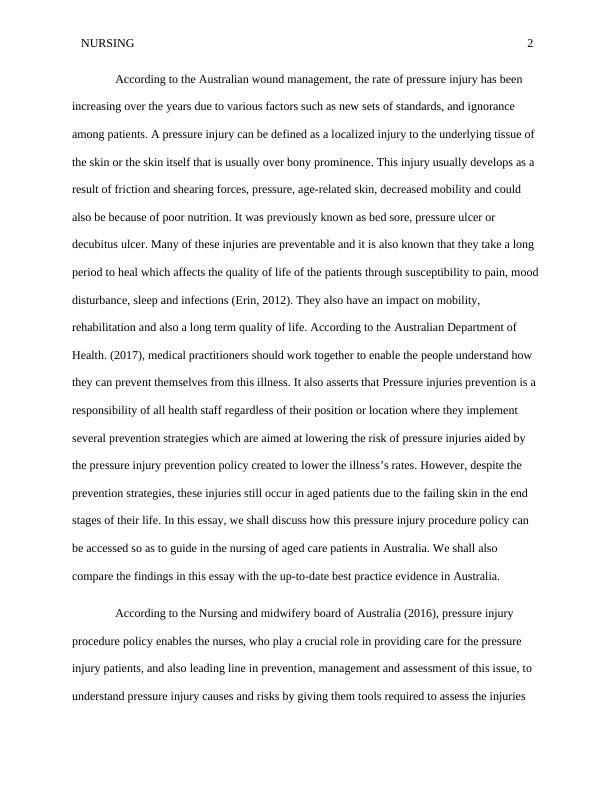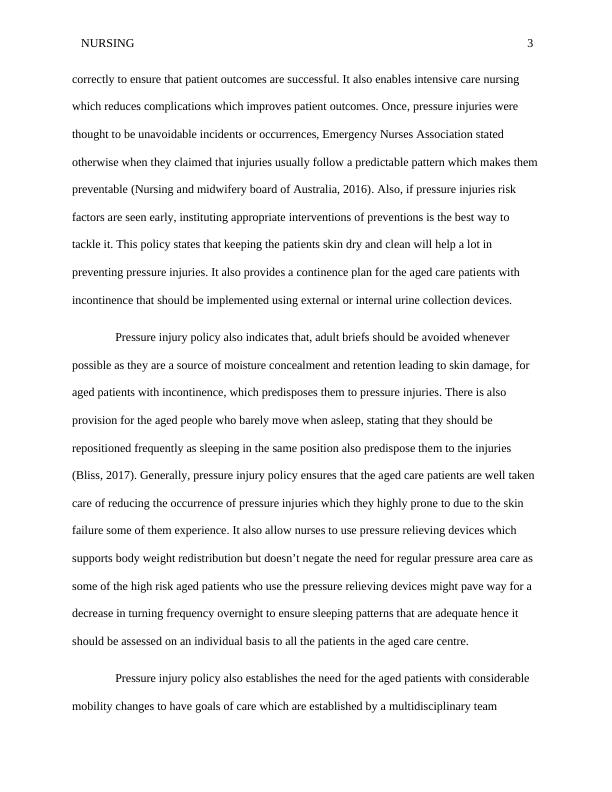Pressure Injury Procedure Policy for Nursing Aged Care Patients in Australia
10 Pages2625 Words414 Views
Added on 2023-06-05
About This Document
This essay discusses the Pressure Injury Procedure Policy for nursing aged care patients in Australia. It compares the findings with the up-to-date best practice evidence in Australia. The policy enables nurses to understand pressure injury causes and risks, assess injuries correctly, and implement prevention strategies.
Pressure Injury Procedure Policy for Nursing Aged Care Patients in Australia
Added on 2023-06-05
ShareRelated Documents
End of preview
Want to access all the pages? Upload your documents or become a member.
Educational Tool for Nurses: Pressure Injury Prevention for Critically Ill Patients in the Intensive Care Unit
|20
|1707
|498
Justification of Action Plan for Preventing Pressure Injury
|7
|1058
|89
HLT54115 Diploma of Nursing
|14
|3564
|64
Preventing Pressure Injuries in Healthcare: A Clinical Problem Analysis
|13
|3626
|97
Assessment of Pressure Ulcer Prevention
|29
|9113
|45
Cause of Pressure Ulcers Discussion 2022
|13
|3973
|15



